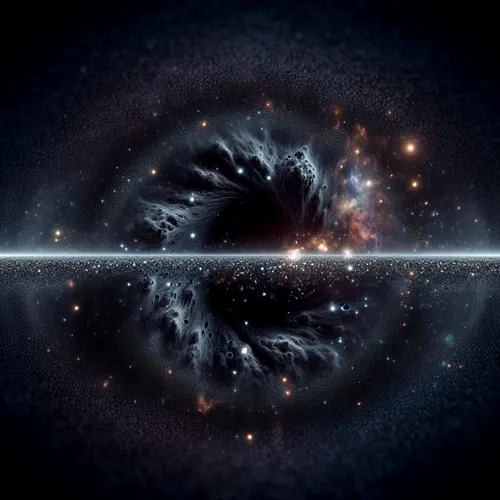We begin our journey by venturing into the enigmatic domain of dark matter - an elusive entity whose influence on the cosmos has captivated the scientific world for centuries. This post will delve into the intricacies of this mysterious phenomenon, examining its origins, detection techniques, and significance to the fundamental structure of our universe.
The Origins of Dark Matter
First and foremost, let’s explore the origins of dark matter - a subject that has baffled cosmologists since its conception. The term “dark” alludes to the fact that this mysterious substance does not interact with electromagnetic radiation or emit light. As such, we are unable to directly observe it, despite its profound influence on the universe’s composition.
Dark matter’s existence was initially hypothesized during the early 20th century when astronomer Fritz Zwicky discovered that galaxies within the Coma Cluster were moving at faster rates than predicted by classical mechanics alone. This peculiar observation led him to propose the existence of additional, invisible mass pervading space - a concept which has since evolved into our current understanding of dark matter.
Detecting Dark Matter: An Ongoing Challenge
The elusive nature of dark matter presents significant challenges when it comes to detection. Given its lack of interaction with light and other forms of electromagnetic radiation, scientists have had to develop novel methods for estimating its presence and distribution within our universe. One such approach involves studying the gravitational effects of dark matter on visible objects like stars, galaxies, and galaxy clusters.
Significance: Shaping Our Universe’s Structure
Dark matter plays a pivotal role in shaping the structure and evolution of our cosmos. By providing the necessary mass to initiate star formation and facilitate large-scale structure formation, dark matter acts as an essential component in the development of galaxies, galaxy clusters, and superclusters - the vast intergalactic webs that make up our universe.
Furthermore, recent evidence suggests that dark matter may also influence the formation and distribution of black holes at the centers of galaxies. These cosmic monstrosities serve as powerful engines for galaxy evolution, propelling stars and gas particles into the surrounding environment and contributing to the development of more complex structures.
In conclusion, the enigmatic presence of dark matter continues to shape our understanding of the universe’s origins, its structure, and its evolution over time. While we have yet to fully unlock the secrets behind this elusive entity, continued research in astronomy and particle physics promises to shed light on the hidden forces that govern our cosmos - bringing us one step closer to unraveling the mysteries of the universe
